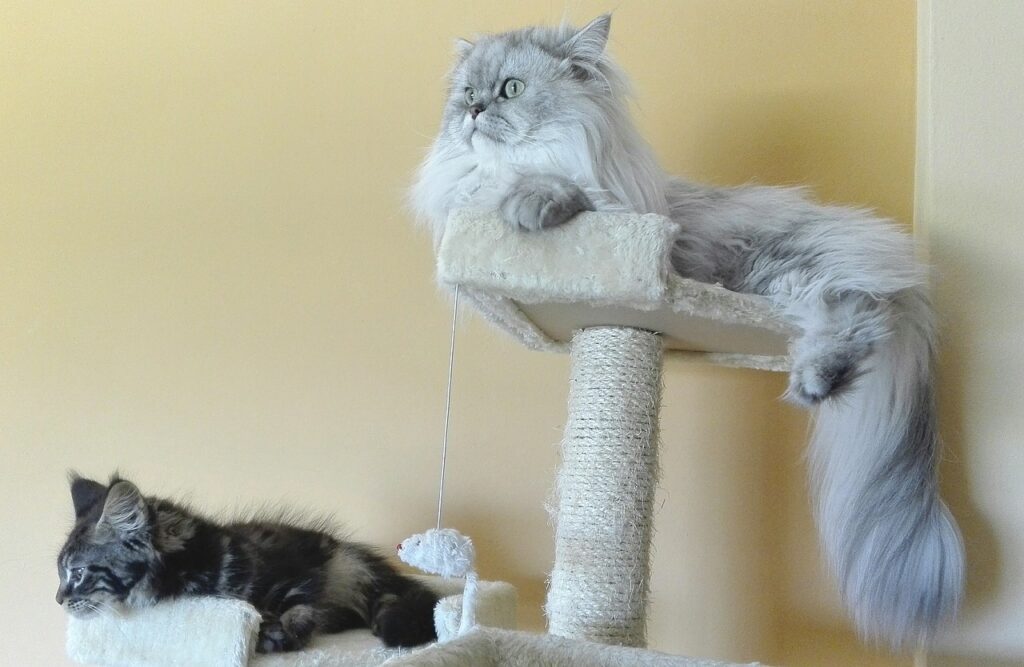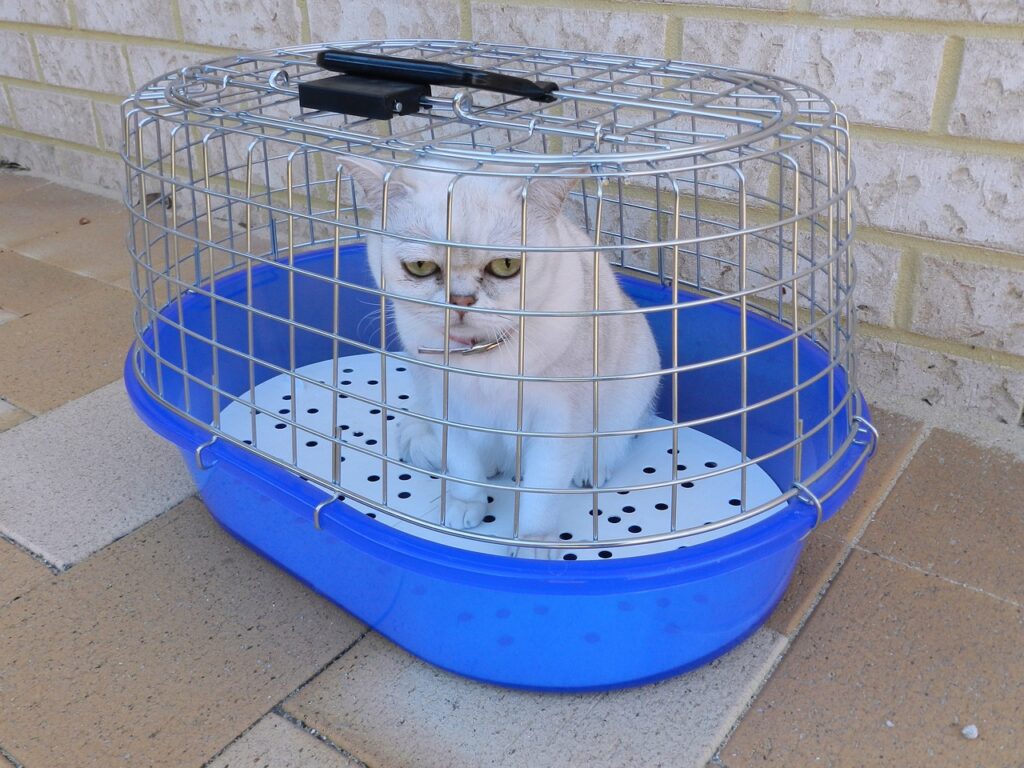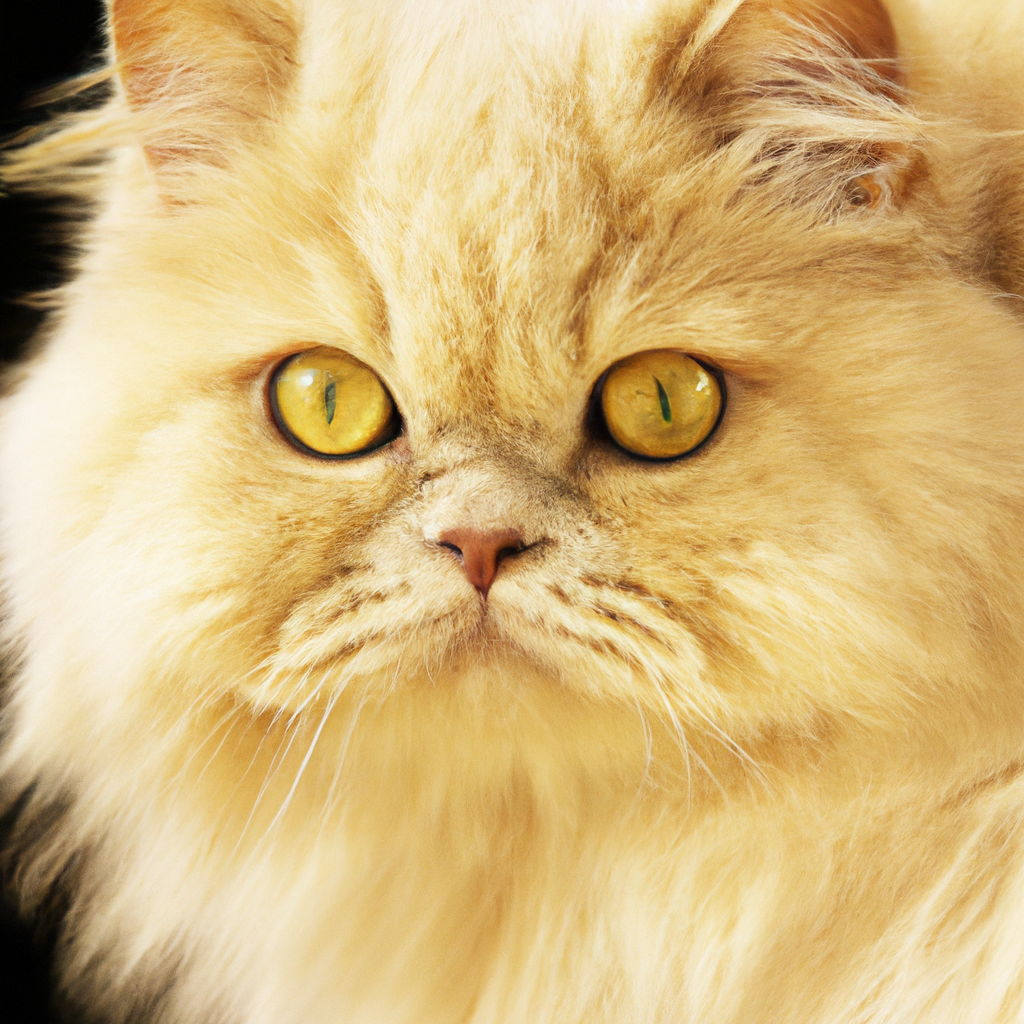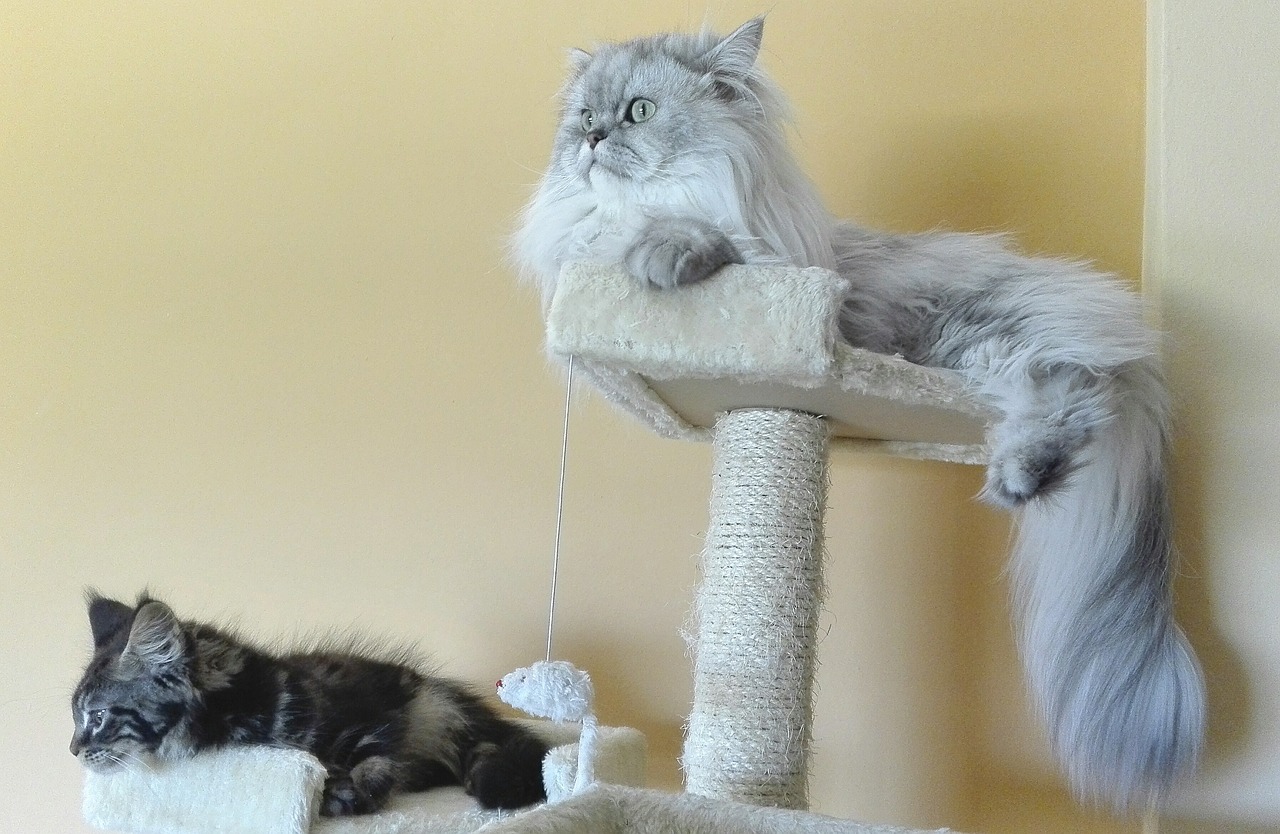If you’ve ever laid eyes on a Chinchilla Golden Persian cat, you’ll know that their presence is nothing short of majestic and imposing. These regal felines have a unique charm that captivates the hearts of many cat lovers. With their striking green eyes, luxurious coats, and elegant posture, Chinchilla Golden Persians exude an air of sophistication and grace. These cats are not only visually stunning, but they also possess a gentle and affectionate nature, making them perfect companions for those seeking both beauty and companionship in their feline friends. Whether it’s their stunning appearance or their endearing personalities, there’s no denying the enchanting allure of Chinchilla Golden Persian cats.
Physical Appearance

Distinctive Features
Chinchilla Golden Persian cats are known for their stunningly beautiful appearance. One of their most distinctive features is their coat, which is characterized by a sparkling silver undercoat and black tipping. This gives them a shimmering and luxurious look, making them the epitome of elegance among cats. Their large, round eyes provide a striking contrast against their light-colored coat and are often green or amber in color.
Size and Weight
Chinchilla Golden Persians are medium to large-sized cats. They have a solid and muscular build, giving them a majestic and imposing presence. On average, male Chinchilla Golden Persians weigh between 9 to 12 pounds, while females generally weigh between 7 to 10 pounds.
Coat Color and Patterns
The coat of a Chinchilla Golden Persian is predominantly silver with black tipping, which produces a chinchilla-like effect. The black tipping is usually more concentrated on the back, tail, and face, creating a stunning contrast against the silver background. This unique coat color and pattern make them highly sought after and prized among cat enthusiasts.
History and Origin
Ancient Roots
The roots of Chinchilla Golden Persians can be traced back to ancient Persia, which is now modern-day Iran. Cats have been an integral part of Persian culture for centuries, with their presence dating back as early as the 17th century. The desire to create a cat with a luxurious and sparkling coat led to the development of the Chinchilla Golden Persian.

Introduction to Persia
During the 19th century, these exquisite cats were introduced to Europe and quickly gained popularity among the aristocracy. They were often seen in the company of royalty and were considered a symbol of wealth and luxury. Their association with Persia, elegance, and opulence further enhanced their appeal.
Golden Persian Breed
The breeding and refinement of the Chinchilla Golden Persian breed continued throughout the 20th century, leading to the establishment of rigorous standards and guidelines to maintain their unique traits. Today, Chinchilla Golden Persians are recognized as a distinct breed and are admired for their extraordinary beauty and grace.
Breed Characteristics
Temperament
Chinchilla Golden Persians are known for their calm and laid-back nature. They have a gentle demeanor and are generally not overly demanding or hyperactive. These cats appreciate a serene environment and thrive in a peaceful and harmonious atmosphere. They make excellent companions for individuals or families looking for a relaxed and tranquil pet.
Intelligence and Trainability
While Chinchilla Golden Persians may not be the most active or playful cats, they are highly intelligent and trainable. They learn quickly and can be taught basic commands and tricks with patience and positive reinforcement. However, it’s important to note that they have an independent streak and may not always follow commands if they’re not in the mood.

Grooming Needs
The luxurious and dense coat of a Chinchilla Golden Persian requires regular grooming to keep it in pristine condition. Daily brushing is necessary to prevent matting and to remove any loose hairs. Special attention should be given to their undercoat to ensure it remains tangle-free. Additionally, regular eye cleaning and nail trimming should be part of their grooming routine.
Proper Care and Maintenance
Feeding and Nutrition
Proper nutrition is essential for the overall health and well-being of Chinchilla Golden Persians. High-quality cat food that is specifically formulated for their dietary needs should be provided. It’s important to consult with a veterinarian to determine the appropriate portion sizes and feeding schedule based on their age, weight, and activity level.
Exercise Requirements
Chinchilla Golden Persians are not particularly active cats and do not require extensive exercise. However, it’s still important to provide them with opportunities for light play and mental stimulation to prevent boredom and obesity. Interactive toys and scratching posts can help keep them entertained and provide them with an outlet for their natural hunting instincts.
Frequent Health Check-ups
Regular veterinary check-ups are crucial for maintaining the health of Chinchilla Golden Persians. Their breed is predisposed to certain health conditions, such as polycystic kidney disease (PKD) and dental problems, which require monitoring. Routine vaccinations, parasite prevention, and dental cleanings should also be part of their healthcare routine to ensure they lead a long and healthy life.
Personality Traits

Laid-back and Calm Nature
Chinchilla Golden Persians are known for their calm and relaxed temperament. They are not typically high-energy cats and prefer a peaceful and serene environment. Their laid-back nature makes them well-suited for individuals or families who appreciate a more tranquil pet.
Affectionate and Loving
Despite their independent streak, Chinchilla Golden Persians are also quite affectionate and loving towards their human companions. They enjoy being pampered and will often seek out attention and affection from their owners. They are known to form strong bonds with their families and make loyal and devoted companions.
Independent yet Social
Chinchilla Golden Persians possess a unique balance of independence and sociability. While they are not overly demanding or clingy, they still enjoy the company of their human companions. They are content to spend time lounging in a cozy spot or observing their surroundings but also appreciate interaction and playtime with their owners.
Living with a Chinchilla Golden Persian Cat
Creating a Safe Environment
When living with a Chinchilla Golden Persian cat, it’s important to create a safe and secure environment for them. This includes ensuring that windows and balconies are properly screened to prevent accidental falls. Additionally, toxic plants, household chemicals, and small objects that could be swallowed should be kept out of their reach.

Providing Entertainment and Stimulation
Although Chinchilla Golden Persians are not the most active cats, they still require mental stimulation and entertainment. Providing them with interactive toys, scratching posts, and puzzle feeders can help keep their minds engaged and prevent boredom. Regular playtime and interaction with their owners are also essential for their overall well-being.
Dealing with Allergies
It’s important to note that Chinchilla Golden Persians have a thick and luxurious coat, which can potentially cause allergies in some individuals. If you or a family member have allergies, it’s recommended to spend time with a Chinchilla Golden Persian before bringing one into your home. Regular grooming and keeping the living area clean can also help minimize allergens.
Famous Chinchilla Golden Persian Cats
Celebrity Owners
Chinchilla Golden Persians have captivated the hearts of many celebrities. From models to actors, these cats have found homes with famous individuals who appreciate their beauty and grace. Some notable celebrity owners of Chinchilla Golden Persians include [insert celebrity names].
Social Media Sensations
In the era of social media, Chinchilla Golden Persians have become online sensations. Their striking appearance and regal presence have captured the attention of cat lovers around the world. There are numerous Instagram accounts and YouTube channels dedicated to showcasing the beauty and charm of Chinchilla Golden Persians, attracting thousands of followers.
Show Champions
Chinchilla Golden Persians have also made a name for themselves in the show ring. Their exquisite coat and elegant stature have earned them numerous championships and accolades. These cats are often seen strutting their stuff on the cat show circuit, impressing judges with their impeccable breed standards and undeniable charm.
Recommended Products and Accessories
Grooming Tools
To keep a Chinchilla Golden Persian’s coat looking its best, certain grooming tools are essential. A high-quality slicker brush and a wide-toothed comb are ideal for daily brushing and detangling. Additionally, tear stain removers and eye wipes can help keep their delicate facial fur clean and free from discoloration.
Toys and Enrichment
Chinchilla Golden Persians may not be the most playful cats, but they still enjoy interactive toys and enrichment activities. Feather wands, puzzle feeders, and catnip toys can help stimulate their natural instincts and provide them with mental and physical stimulation. Having a variety of toys and rotating them regularly can help keep them engaged and entertained.
High-Quality Cat Food
Feeding a Chinchilla Golden Persian a balanced and nutritious diet is essential for their health and well-being. Opt for high-quality cat food that is specifically formulated for their unique dietary needs. Look for brands that use premium ingredients and avoid fillers and artificial additives. It’s also important to provide fresh water at all times and monitor their portion sizes to prevent overfeeding.
Breeding and Raising Chinchilla Golden Persians
Choosing a Breeding Pair
Breeding Chinchilla Golden Persians requires careful consideration and selection of suitable breeding pairs. It’s important to choose cats with excellent breed standards, health records, and good temperaments. Working with reputable breeders and consulting with experienced professionals in the field can help ensure a successful and responsible breeding program.
The Breeding Process
The breeding process involves careful timing and monitoring of the female cat’s estrus cycle. Once the female cat is in heat, she is introduced to the selected male cat for mating. Pregnancy lasts approximately 9 weeks, and during this time, the mother should receive proper nutrition and care to support a healthy pregnancy.
Caring for Newborn Kittens
Raising Chinchilla Golden Persian kittens requires dedication and attention to detail. The mother cat should be provided with a quiet and comfortable area to give birth and nurse her kittens. Monitoring the kittens’ growth, providing a safe and clean environment, and socializing them from an early age are crucial for their development. Regular veterinary check-ups and vaccinations should also be scheduled to ensure their health.
Challenges and Potential Health Issues
Polycystic Kidney Disease (PKD)
Chinchilla Golden Persians are prone to polycystic kidney disease (PKD), a hereditary condition that affects the kidneys. Regular monitoring and screening for PKD through DNA testing are essential for responsible breeding practices. It’s also important for pet owners to be aware of this potential health issue and seek veterinary care if any symptoms, such as increased thirst or frequent urination, are observed.
Dental Problems
Due to their breed’s distinctive flat face and underbite, Chinchilla Golden Persians are more prone to dental problems such as periodontal disease and tooth crowding. Regular dental care, including brushing their teeth and providing dental treats, is important to prevent issues and maintain good oral hygiene.
Respiratory Conditions
Chinchilla Golden Persians, like many flat-faced breeds, are more susceptible to respiratory conditions. Their shortened nasal passages and flat face can make it harder for them to breathe, especially in hot and humid environments. It’s important to provide them with a well-ventilated living area, avoid exposure to extreme temperatures, and seek veterinary care if any respiratory issues arise.
Note: Keep in mind that this article is for general informational purposes only and should not substitute professional veterinary advice.
